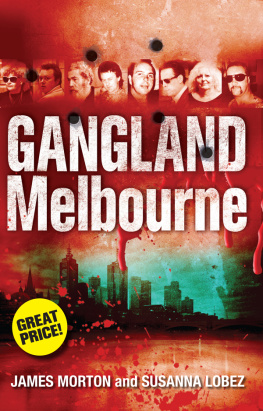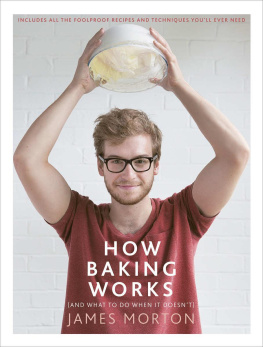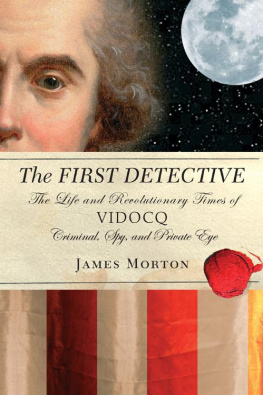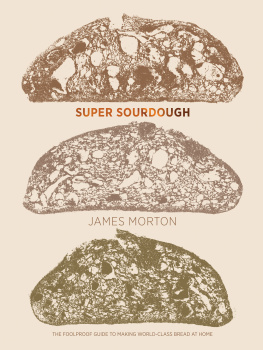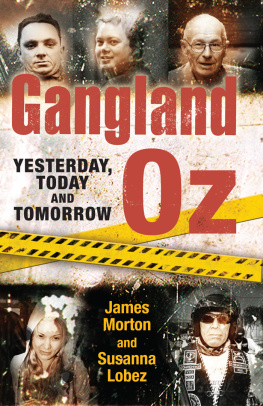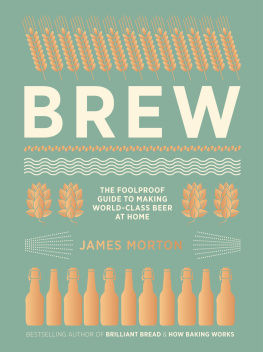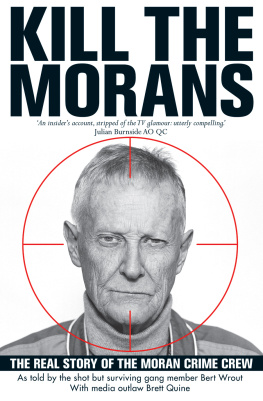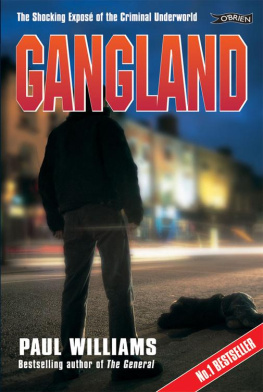Preface
On the face of it people might not think that Melbourne numbers among the great crime cities of the world. Theres Chicago and Al Capone; New York and the Five Families; certainly Detroit and its Purple Gang, Marseilles and its history of white slaving and dope dealing. London and the Kray Twins, yes. Berlin and Macau, possibly. But Melbourne? Come on, get real.
But they would be wrong. Throughout the last century the city has spawned a series of quality criminalssome, of course, better known than others. There have been the Bourke Street Rats, followed closely by Australias favourite larrikin Joseph Leslie Theodore Squizzy Taylor and, in the 1920s, his henchman Norman Bruhn, whose descendents still operate today. In 1939 Melbourne had a higher crime rate per capita than London and its record for violent robberies was then the worst in Australia. And after the war there were some great robbers such as Ray Chuck Bennett of the Great Bookie Robbery and his lesser known but almost as talented predecessor Leslie Woon. There have been great warsTaylor and another offsider Harry Stokes against John Snowy Cutmore and his mate Henry Slater, which ended in the deaths of both Taylor and Cutmore; the long-running Painters and Dockers Union war of the 1970s, which saw the assassination of secretary Pat Shannon and resulted in the deaths or disappearances of up to forty dockers, their friends and innocent bystanders; the war for control of the Queen Victoria Market; and finally the Melbourne Gang War between the Carlton Crew and the New Boys from the late 1990s to the present day, in which the body count tallies over thirtynot including the standover men, brothel madams, cocaine, heroin, amphetamines and crack dealers and, regrettably, some police officers who, over the years, have changed sides. All in all, Melbourne can proudly take its place in the pantheon of crime cities. This, then, is the story of some of the men and women who have placed it there.
Some surprise may be expressed at the absence of names that have been on the lips of the cognoscenti over the past two decadespeople who, it seems, have simply disappeared from the streets into a legal gulag. The reason for this is the number of suppression orders handed out by the courts to protect multiple killers who may be wheeled out in the future to give evidence for the prosecution in high-profile trials. These orders may easily last for half a decade or more. In the event of any of them being lifted their stories will appear in future editions.
Our thanks are due first and foremost to Dock Bateson, without whose help, guidance and research the book would never have seen the light of day. Then in strictly alphabetical order our thanks go to Anne Brooke, Cinzia Cavallaro, the late Clive Coleman, Foong Ling Kong, Diane Leyman, Barbara Levy, Sybil Nolan, Kath Pettingill, Russell Robinson, Adrian Tame, and many others on both sides of the criminal and judicial fences who have asked not to be named. Our thanks also go to NSW Supreme Court Public Information Officers Sonya Zadel and Lisa McGregor, NSW DPP Media Liaison Anna Cooper and Victorian Supreme Court Information Officer Anne Stanford, the staff of the State Archives of New South Wales, the Public Record Office of Victoria, the National Library of Australia, and the State Libraries of New South Wales, South Australia, Queensland, Victoria and Western Australia, the British Library, the Newspaper Library, Colindale, England, the National Archives, Kew, England. The following websites have been invaluable: www.austlii.edu.au, www.trove.nla.gov.au/newspaper, www.paperspast.natlib.govt.nz and www.news.google.com/archivesearch.
1
Not So Marvelous Melbourne
In the early hours of 2 April 1852 a team of mensome dressed as women, and led by James Duncan, James Morgan and John James, who had come together robbing diggersrowed across Hobsons Bay in two boats stolen from a local hotel to the Nelson , a barque being loaded with 8000 ounces of gold worth around 30 000 before sailing for London. Passengers and crew were nailed up in the stateroom, where they remained until a steward found them the next morning. The success of the robbers was short-lived. With a reward of 750 on offer, the leaders were caught within three weeks. Justice was swift and in May the trio received fifteen years apiece on road gangs; the first three were to be spent in irons. Only around 2260 was recovered. The rest was thought to have been fenced through a St Kilda publican, John Dascome. It was this raid that convinced the authorities that they needed a proper detective force, and men from Scotland Yard were brought out.
During the afternoon of 16 October that same year, four mounted and armed men (thought to be survivors of the Nelson raid) bailed up every individual they encountered on St Kilda Road. At sunset they galloped off into the bush towards South Yarra. Three days later John Flanigan and Thomas Williams were caught and sentenced to thirty years. Williams was later hanged for his part in the murder at Williamstown on 26 March 1857 of John Price, the highly unpopular and sadistic inspector of prisons. Flanigan, who gave evidence against his former offsider, was released in 1862.
As Melbourne grew, in came the magsmen, or confidence tricksters, and the three-card merchants. There were also coiners and rather more organised burglars. Thefts, which until the 1860s had been opportunisticfrom the back of wagons, unlocked houses and yardsbecame more professional. The detective division of the police was also on the up. John Christie, a champion boxer and rower and probably the best of the Melbourne detectives of the time, joined the force in 1867 when at the age of twenty-one he walked in off the street with a character reference. Within a matter of months his arrest record far surpassed those of other officers.
One of the more professional jobs in the late 1860s was a series of silk robberies, which for a time went unsolved despite a 250 reward. Then, with information received, in March 1869 Christie arrested a Thomas Griffiths living in Stanley Street, West Melbourne, after he had robbed the firm of Clarke and Adams at the corner of Elizabeth and Collins streets. Griffiths operation, a family business, now unravelled. He had used Thomas jnr, one of his sons, to break into buildings with him, and his wife Ann disposed of the goods, selling them door to door in Toorak. On 22 January 1870 he received eleven years. In 1872 Mrs Griffiths, who worked as a nurse and stole from her patients, was again convicted of theft and receiving and was sentenced to eighteen months. She later opened a small hospital in Carlton.
Garrotting during a street robbery was prevalent, particularly before electric lighting was installed in Hyde Park. In July 1870 John Moore and Thomas Bourke, who worked Little Bourke Street, each received ten years after garrotting the elderly Arthur Harvey while robbing him. Twenty years later the authorities were still keen to show that violence would be severely punished. On 11 May 1888 at the Collingwood Court, Thomas Donoghue and Henry Long Harry Towerson each received twelve months hard labour after being convicted of being suspected persons. Towerson was then hauled off to the Central Criminal Court for bag snatching and the robbery of a watch, and received a further seven years hard labour and fifteen lashes to go with it. There was no question of rehabilitation, howeverat least so far as Towerson was concerned. He was back housebreaking in April 1893 when he received two years to run consecutively with another twelve-month sentence. He was still operatin g a decade later when in November 1902, then aged forty, he was found with a revolver and charged with having housebreaking implements.
The next generation of garrotters and robbers included wharfer Thomas Chopsey Hayes, who received five years for shooting at a policeman in September 1905, and his offsider the diminutive redheaded Allan Ginger Moore, who stood a bare five feet. In 1907 in Sydney, Moore received five years for the burglary of Lady Burton at Darling Point and in September 1912 he was sentenced to death for the attempted murder of householder Geoffrey Syme in a burglary in Kew. His sentence was remitted and in April 1928 he was released into the care of the Salvation Army.

